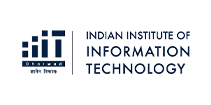Top Finance Project Ideas for Career Growth: From Investment to FinTech
If you're a finance student or professional seeking to improve your finance skills, working on real finance projects is the best way to improve or learn about finance. Theories and textbooks indeed provide a good foundation, but finance is about numbers, trends, and decision-making in current fast changing and dynamic contexts. A successful finance project will provide you with hands-on experience in financial investment strategies, risk management, corporate finance and emerging technologies such as FinTech.Think about assessing how stock market volatility affects investment portfolios, looking at an organization's financial health and overall risk, or understanding how AI is changing the way we approach fraud detection. These projects are not just good projects that you can put on your resume, instead, they are life experiences that will prepare you for financial scenarios in the real world.
Today's employers want people who can show they have actual experience, not just academic experience. Therefore, whether you are a finance student preparing for a future in finance or you are already a finance professional looking to gain some skills in finance, working on meaningful finance projects can really set you apart. Now, let's explore the value finance projects bring to your career.
Finance Projects and Their Importance: An Overview

Finance projects are either structured projects or research-based assignments that allow students or practitioners to use finance theories in a real-world financial case. Finance projects, such as project-based or portfolio analysis, vary greatly by their complexity, so, you could evaluate an investment portfolio or evaluate the effect of economic policy on the financial market. Projects serve a purpose whether you are in school for academic credit or developing your technical analysis skill from a self-interest or career interest perspective, they allow financial students or practitioners to bridge the gap between theory and practice.
How Projects Help in Understanding Real-World Financial Scenarios?
Finance is more than math; it is about making rational decisions based on sizable market factors and activity expectations related to business and profit costs. Producing hours of finance projects helps both students and practitioners become more acquainted with the courses and professional applications of complex finance topics and coursework projects. For example, forecasting stock prices using historical data or evaluating a company's valuation using financial models gives hands-on exposure to industry practices.Key Areas Where Finance Projects Are Applied
Finance projects cover a broad array of topics including:- Investment & Stock Market Analysis –Experience utilizing stock performance, portfolio diversification, and asset allocation.
- Corporate Finance – Demonstrating an analysis of the respective capital structure of a company, or conducting due diligence with respect to respective mergers or acquisition of the firm, and a standalone firm valuation.
- Risk Management – It helps identifying and mitigating financial risks, aspiring to hedge or no-risk or solvency measurement.
- FinTech & Data Science in Finance – Using AI, blockchain, and big data to improve financial decision-making.
- Personal Finance & Wealth Management – Identifying tax-saving tactics, retirement funding, and financial advisory.
Role of Finance Projects in Skill Development and Career Growth
Excellent implementation of finance projects will boost your ability to solve problems and analyze situations and make decisions which elevates your marketability to employers. Companies prefer job applicants who bring abilities to implement financial models and understand both data analysis and make strategic business decisions from authentic financial situations. Financial projects teach students step-by-step methods to resolve business issues that find applications in corporate finance and investment banking together with financial consulting.Working with portfolio diversification strategies builds your knowledge about risk management whereas conducting business valuation analysis strengthens your assessment ability of company performance. Business projects in finance develop skills that enhance confidence regarding financial decisions thereby helping you prepare for future leadership positions. You turn theoretical concepts into real-life application experience through practical scenario implementation of financial lessons.
How to Choose the Right Finance Project?
Selecting an appropriate finance project is essential to maximize your learning experience and elevate your career. A selected project supports your understanding of the financial tools and concepts while also reading as useful for future employers. Here are some important items to think about before selecting your finance project:
1. Does it align to your career path?
The project should also relate to the field of finance that interests you the most, whether it is investment analysis, corporate finance, risk management or derivatives or FinTech, you should select a project in the same field that you are targeting to get practical experience. For example:
- If you want a career in investment banking, a finance project on business valuation or M&A case studies would include practical experience.
- If you are interested in risk management, you could do a finance project on hedging strategies using derivatives as a project.
- If you love FinTech, select a topic like AI in fraud detection or blockchain in finance.
Finance, as a field, is always changing, and keeping up with the trends in finance is vital to your success. If you undertake a financial project that relates to currently trending topics in finance, you can add greater value to your work and contribute to your research insights. Following are several examples of trending topics in finance:
- Cryptocurrency and blockchain finance
- ESG (Environmental, Social and Governance) investing
- Applications of machine learning to financial forecasting
- The impact of government regulations on banking and finance
A good finance project will require reliable data that you can look at and assess or analyze for findings. Before you decide on a project topic, be sure that you can access data and information that relates to the financial topic for your work. Sources could include:
- Stock Market Data: NSE/BSE, Yahoo Finance, Bloomberg
- Financial Statements of companies: Moneycontrol, official reports and investor relations pages
- Government and regulatory reports: RBI, SEBI, World Bank
- Industry reports and academic research papers: Google scholar, statista.
Interesting Finance Project Ideas for Students
Let’s discuss some fun finance project ideas that can contribute to hands-on experience and develop analytical skills. We will begin with Investment & Stock Market Projects, one of the most popular areas of finance.1. Investment & Stock Market Projects
Investment and stock market projects can help students learn about market behavior, risk management, and portfolio optimization. Investment and stock market projects are highly application-oriented and will benefit people interested in investment banking, financial analysis, or wealth management.
(i). Portfolio Diversification Strategy
Objective: Compare different types of assets such as stocks and bonds, mutual funds, real estate, and cryptocurrencies to analyze risk-return tradeoffs.
Why is it important?
The project will support your understanding of how diversification works to mitigate investment risk and maximize returns.
Key steps:
- Collect historical return data for various asset classes.
- Calculate risk (i.e., standard deviation) and return (i.e., compound annual growth rate) for each asset.
- Use principles of diversification like Modern Portfolio Theory (MPT) to analyze optimal asset allocation.
- Present findings about the best diversification strategy based on levels of risk tolerance.
(ii). Impact of Economic Events on Stock Prices
Aim: Explore the effects of inflation, recessions, global crises, or government policies on stock market trends.Why is it relevant?
Knowing how markets react to economic events is very important to traders, investors, and financial analysts.
Key steps:
- Select a major economic event, for example: COVID-19, interest rate changes, or the Russia-Ukraine war.
- Select a few companies or stock indices, for example: NIFTY 50 or S&P 500.
- Examine the stock price changes before, during, and after the event.
- Identify patterns in trading volumes and investor sentiment.
Aim: Compare the risk and return characteristics of cryptocurrencies and traditional asset classes over the past 5 years.
Importance:
In light of the growing prevalence of digital assets, an important consideration for investors is whether or not cryptocurrencies are a viable investment to hold.
Key steps:
- Collect price data for Bitcoin, Ethereum, and major stock indices, for example: NIFTY 50 or S&P 500.
- Examine the risk-adjusted metrics, average return metrics, and volatility using the Sharpe Ratio metric.
- Examine investment performance across a number of different market conditions, for example, bull and bear phases.
- Provide insights into the view of cryptocurrencies representing a reliable alternative to the traditional investment.
2. Corporate Finance & Business Strategy Projects
Through corporate finance companies learn to handle financial resources while deciding on investments and building the best possible capital structure. The projects will give you practical training for careers including financial consulting together with investment banking and corporate finance management.
(i). Business Valuation of a Startup vs. Established Company
The research aims to evaluate the assessment processes that startups and mature organizations use for valuation purposes. The process of entity appraisal plays an essential role throughout investment banking activities and corporate finance operations and venture capital assessment.
Key steps:
- The project requires selecting a developing FinTech startup as the startup along with Infosys or Reliance as the established firm.
- The valuation process should utilize DCF and P/E Ratio alongside EBITDA multiples analysis for a complete evaluation.
- Examine the monetary differences between startup valuations and established firms then study startup-exclusive risk elements.
- Identify the most suitable valuation technique for different types of business enterprises.
This study explores the optimal methods that organizations use to distribute debt and equity to increase their financial results. Knowing capital structure allows businesses to create better financing decisions as well as evaluate financial stability.
Key steps:
- Firms representing different business sectors such as IT and pharmaceuticals as well as manufacturing should be selected for comparison.
- The capital structure of these organizations should be examined through financial ratio analysis of Debt-to-Equity Ratio and Interest Coverage Ratio.
- Compare financing strategies and their impact on profitability and risk.
- Professional advice should be given regarding optimal capital structure designs for different industrial sectors.
Analyze the success or failure of a high-profile M&A deal. The importance stems from M&A operations that influence business expansion along with market control and financial system stability.
Key steps:
- One notable M&A case will serve as the subject of analysis (select from Facebook’s WhatsApp purchase or Tata’s Air India acquisition or Disney’s Marvel takeover).
- The evaluation includes an analysis of both financial results before the merger alongside results following the merger completion.
- Analyze the impact on stock prices, market competition, and financial synergies.
- Identify key success factors or reasons for failure.
3. Financial Risk Management Projects
To minimize risks and achieve financial stability organizations need a proper management of their risks as a fundamental financial responsibility. These educational projects enable students to learn multiple approaches for risk assessment together with various hedging methods and credit risk evaluation systems.
(i). Credit Risk Assessment of Banks and NBFCs
The main task involves evaluating credit risk levels in banks and Non-Banking Financial Companies through assessments of loan default patterns and implementation of risk control measures. Credit risk assessment stands as a necessity for financial institutions because it helps organizations recover loans while preserving their profitability.
Key steps:
- Examine three banks along with three NBFCs including SBI alongside HDFC Bank and Bajaj Finance.
- The analysis includes examination of asset non-performing ratios as well as default rate data and funding provisions established by these institutions.
- Analyze the risk exposures between financial institutions and analyze their techniques for risk management.
- Propose strengthened approaches for institutions to handle their credit risk better.
The research investigates the manner through which financial derivatives such as futures options and swaps enable businesses to reduce their financial exposure. The importance of hedging emerges because it enables organizations to defend against market price swings and currency volatility and interest rate variations.
Key steps:
- University programs introduce different derivative instruments for risk management purposes.
- For this assignment choose a company which employs derivatives by exploring its use of fuel price hedges like airlines do.
- Companies should evaluate how their hedging techniques work to decrease financial risk exposure.
- The article evaluates hedging and speculation approaches whereas it explores effective strategies to manage financial risks.
The research investigates the effect which interest rate fluctuations create on financial market borrowing and lending processes. The interest rate system directly affects all banking loans while it controls mortgage costs and corporate funding sources.
Key steps:
- The variation of RBI Repo Rates throughout the past years needs observation.
- Study how modifications in interest rates affect the expansion rates of bank loans.
- Evaluate how home, personal and business loans can be impacted by increasing or decreasing rates.
- Describe how financial decisions on interest rate fluctuations can be adjusted by businesses or individuals.
4. Personal Finance & Wealth Management Projects
Wealth management through personal finance assists people by developing financial strategies and defining investment approaches as well as tax optimization practices to reach their monetary intentions. These projects deliver substantial value to individuals who want to work in financial advisory and wealth management as well as personal investment planning.
(i). Retirement Planning Models for Different Age Groups
The main goal is to create multiple investment plans suitable for millennials and Gen X members and baby boomers which guarantee retirement money security. The proper planning of retirement has essential importance because each age group needs different financial strategies for security.
Key steps:
- The retirement planning approaches that include Systematic Investment Plans (SIP), Provident Fund (PF), and National Pension System (NPS) should be identified.
- Assess the capabilities of people from different age groups to accept risks.
- Restate to develop unique financial planning approaches that cater to people in their three specific age groups: 20s, 40s and 60s.
- The financial advisor should give actionable advice to people about how they can achieve financial security after retirement.
The research completes an evaluation of actively managed mutual funds against passive index funds to ascertain their performance returns. The understanding of mutual fund performance creates essential knowledge needed for investors to select better investment options.
Key steps:
- A study will examine both actively managed funds such as SBI Bluechip Fund and HDFC Equity Fund and index funds with the NIFTY 50 Index Fund and S&P 500 ETF.
- Historical returns data and expense ratio performance information with risk-adjusted measures such as Sharpe Ratio and Alpha need a thorough analysis.
- Choose the investment fund which demonstrates more favorable long-term profitability.
- Strategies should be provided to determine the appropriate situations where investors need to choose between actively managed funds and passive investments.
Salaried professionals require an examination of tax-minimized investment opportunities alongside financial planning techniques to discover. Tax planning yields substantial importance for savers because it enables them to obtain higher financial savings and boost their available funds.
Essential Steps:
- Investors should identify tax saving opportunities from the Income Tax Act under sections 80C, 80D and 10(10D) which allow equity linked savings schemes, a public provident fund and national pension scheme investments.
- Compare the tax efficiency of different investments in terms of returns, for example Fixed deposits vs. ELSS Mutual Funds.
- Consider tax saving measures and their impact on long-term wealth accumulations.
- Provide suggestions based on respective income levels for the most tax efficient investment portfolios.
5. FinTech & Data-Driven Finance Projects
The technology of FinTech, including: enables changes to happen in the financial sector through artificial intelligence systems, as well as blockchain technologies and digital payment methods. The initiatives will enable learners to investigate how modern technology supports financial decision systems while improving risk evaluation processes across detection of fraudulent activities.
(i). Use of AI in Financial Fraud Detection
The analysis investigates artificial intelligence (AI) together with machine learning (ML) techniques which banking institutions use to detect fraudulent financial transactions. Financial institutions use AI-driven models to identify suspicious activities which helps prevent fraud incidents from rising due to their growing concern.
Key steps:
- Understand how artificial intelligence detects fraud during work with financial institutions through analyzing UPI, Paytm, Razorpay and similar payment platforms.
- The study needs to investigate the three main fraud detection approaches consisting of pattern recognition along with irregular detection and transaction monitoring systems.
- The analysis of financial transactions to detect fraud should use Python or R programming languages.
- Integrate examples of artificial intelligence implementations which strengthen both online banking and payment systems security.
The research goal evaluates blockchain technology as it transforms banking institutions and modifies payment procedures and financial operations. The importance of blockchain technology arises from its ability to boost financial service security through transparent operations and its elimination of internal and external intermediaries while fighting fraud.
Key steps:
- Describe blockchain core principles combined with its position in Decentralized Finance (DeFi), Smart Contracts and Cryptocurrencies systems.
- Study case examples of blockchain adoption in banking (e.g., JP Morgan’s blockchain-based payment system).
- Compare how blockchain technology produces advantages when compared to established financial operations.
- Discuss the key obstacles and barriers that prevent blockchain from becoming successful in standard financial operations.
A goal exists to use historical data for developing stock market trend predictions through machine learning artificial intelligence models. ML-based predictions enable stock investors and traders to improve their decision making by indicating stock price movement patterns.
Essential Steps:
- Access stock market data from either the NSE, BSE, or global indices that include the S&P 500.
- Model market patterns using machine learning models, for example linear regression, decision trees and neural networks.
- Visualising and interpreting the results of predictions developed using python or R or Excel.
- Assess the accuracy of the model by assessing the predictions of ML against the real stock market trends.
6. Economic and Policy-Based Projects
Students can comprehend how government policies together with economic indicators and inflation rates influence financial markets and businesses through economic and policy-based finance projects. Research projects in Economic and policy-based finance particularly suit students who want to pursue economic research or financial policy work or financial consulting careers.
(i). Impact of Inflation on Consumer Spending Behavior
Researchers must evaluate the effect that inflation escalation has on consumer spending behavior alongside purchasing habits. This critical information demonstrates that inflation modifies available income distributions and savings patterns while controlling market consumer behavior that influences firm profitability and economic stability elements.
Key steps:
- The student should examine historical inflation patterns alongside their consequences on buying behavior among consumers.
- The examination should detail price changes for basic necessities such as food and fuel and nonessential items like luxury products and travel.
- Basic research requires examination of purchasing power data and consumer price index information.
- The plan includes advice for both individuals and businesses regarding survival strategies during inflationary times.
A goal exists to assess how new financial policy decisions and regulatory network setups affect banking sector prosperity alongside business stability levels. Literature shows that governmental decisions play a vital role in determining lending rates whereas they also shape both bank accessibility for all strata of society and banking system performance levels.
Key steps:
- Study the main banking regulations which include RBI's monetary policies together with priority sector lending as well as digital banking reforms.
- Study their effects on the distribution of loans together with credit opportunities while assessing the bank's stability.
- Study the performance patterns of banking institutions between those successfully affected by regulatory shifts and those facing difficulties because of regulatory changes.
- Your research demonstrates approaches which banks can utilize to transform their operations within altering policy structures.
Examine the correlation between a country's GDP growth and stock market trends. The understanding of these relationships matters because economic development notably affects share value performance although worldwide disasters and market feelings influence investment market dynamics.
Key steps:
- Analyze GDP growth patterns of the last decade along with their effect on NIFTY 50 and BSE Sensex stock market indices.
- During economic booms and recessions, compare GDP and stock market growth.
- Analyze how investor confidence and corporate earnings influence stock prices, independent of GDP.
- Provide conclusions on whether GDP growth is a reliable indicator of stock market performance.
Conclusion
Students pursue finance-related projects as practical solutions instead of traditional academic work which leads them to address real issues in financial problem-resolution. Financing projects help you acquire essential analytical thinking and critical skills that your career demands through investigation of both investment strategies, corporate finance, risk management and FinTech advancements.
Working on these topics exposes you to real-world financial analysis methods which help you evaluate economic trends and deliver critical decisions exactly as finance professionals do in professional practice. These projects deliver clear advantages when you seek employment in investment banking or financial consulting as well as in personal wealth management fields because they improve your interview performance and practical skill sets at work.
Your success depends on selecting an interesting topic then conducting thorough research before learning from this valuable experience.
FAQs (Frequently Asked Questions)
1. How do I choose the right finance project for my career goals?
Your interest or specialization in corporate finance, risk management, FinTech or economic policy needs to be determined first. Potential banking career professionals should work on projects related to credit risk or capital structure analysis. Finance projects powered by artificial intelligence become exciting for people who find FinTech appealing. Select your project topic from areas that serve your ultimate occupational aims while considering present and future market developments.
2. Would I require detailed financial expertise to complete the projects?
Not necessarily. Some projects need financial concept knowledge but research-based projects can be analyzed through fundamental data frameworks and logical problem-solving abilities. Technical projects that incorporate machine learning or blockchain functionality can be approached with the help of online educational resources before starting work.
3. Which tools and software deliver maximum benefits for financial project work?
It depends on your project. Data analysis requires Excel together with Python and R and Tableau for processing data effectively. Bloomberg Terminal as well as Yahoo Finance and stock market APIs support financial modeling activities. Project work on blockchain or FinTech requires an exploration of Ethereum and Binance Smart Chain platforms.
4. Can I use real-world data for my finance project?
Yes! Financial datasets along with other related data are accessible to the public domain. One can obtain stock market data from NSE/BSE or economic reports from RBI and World Bank in addition to accessing company financial statements through annual reports and investor presentations. Data gathered from actual settings gives your project practical value as well as deeper understanding.
5. How can finance projects help in my job search or MBA applications?
The effectiveness of a properly researched finance project displays your aptitude for analysis together with your ability to solve problems and your financial expertise which both recruiters and MBA admissions committees find particularly important. An accomplished financial project functions simultaneously as a robust demonstration of domain knowledge in particular financial sectors.
Trending Posts
-
Top 5 Online MCA Colleges in India in 2025
-
Parul University Online Programs 2025: Programs, Admission, and Benefits
-
Are Online MBA Degrees Valid in India? All You Need to Know About Them
-
Top Certifications to Boost Your Earnings by 10 Lakhs or More
-
Kurukshetra University Online & Distance Learning: Quality Education at Your Fingertips
-
Lovely Professional University (LPU) Online: Benefits, Courses, Tuition Fees, Admission Process
-
IIIT Dharwad’s Online M.Tech in Data Science & Artificial Intelligence: A Complete Guide
-
Jamia Millia Islamia Online & Distance Courses 2025 – A Student’s Guide
-
NMIMS CDOE: Benefits, Courses, Tuition Fees, and Admission Process
-
IGNOU Distance & Online Learning Programs 2025: Everything You Need to Know
-
DY Patil Pune Online: Courses, Admission and Fees 2025
-
Top Online MBA Universities in India 2025
-
7 Major Changes Introduced by UGC You Need to Know About
-
Top 11 Affordable Online MBA Colleges in India in 2025
-
How Much Do BCA Graduates Earn? Salary & Career Path Explained































































